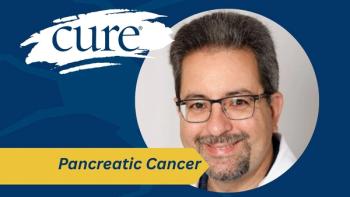
Living and Dying Might Depend on Cost
Which life is worth saving? More and more it depends on the cost of the drug used to treat your cancer.
What is a year* in the life of a metastatic breast cancer patient worth? About $100,000, according to a study published in the Journal of Clinical Oncology entitled
Perjeta, approved in 2013, was welcomed as a boon to the HER2-positive cancer community. Combining Perjeta with Herceptin (trastuzumab) and docetaxel was found to add almost twol years to the life of a metastatic breast cancer patient. But Herceptin is priced around $4,500 per month and Perjeta around $6,000 per month (
From a strictly economic standpoint, it makes sense to perform a cost-benefit analysis of the use of treatments in certain patient populations. Metastatic cancer patients typically live fewer years than non-metastatic cancer patients. So it’s simple. Looking to buy a new pair of shoes? A high-quality pair, priced at $100, will last 10 years. The amortized value of those shoes works out to $10 a year. A lower-quality pair of shoes, priced at $20, but needing to be replaced every year? That brand will cost you $200 over 10 years. Which pair of shoes is cheaper in the long run? Which pair of shoes would you buy? Metastatic cancer patients live fewer years, and the cost of their treatment is high, so the overall cost of the treatment is higher. Based on that math, as the study states, “Expensive targeted therapies are far more likely to be cost effective in the nonmetastatic setting.”
But it’s not as simple as that. There are those two years added to a patient's life. We metastatic cancer patients live in dog years. For me, those those years are more like 14 years. That’s extra time I get to spend with the people I love, time I can dedicate to advocating for a cure, time I can spend enjoying the sun on my face. It’s as my friend
That’s the problem. New therapies are expensive, drug companies setting the price for several recently-released treatments at over $100,000 per year. Even with good insurance, providing 80 percent coverage for prescribed medications, this leaves the patient with $20,000 or more in debt. And this type of debt means people living with cancer are three times more likely to file for bankruptcy than people without cancer (
Major cancer centers like Memorial Sloan Kettering Cancer Center have already started addressing the problem of drug pricing. In 2012, MSK researchers evaluated the drug Zaltrap against Avastin, both prescribed for the treatment of colorectal cancer. Zaltrap cost about $11,000 per month, twice as much as Avastin. In their evaluation, researchers found that both drugs extend life by 1.4 months, but beyond the slightly higher toxicity of Zaltrap, there were no major differences in the drugs besides the cost. MSK decided to not offer Zaltrap to their patients, writing an op-ed piece in the New York Times to explain their decision. In the face of this challenge to their pricing, the drug's co-marketer Sanofi dropped the price of Zaltrap in half, confirming that the price had been artificially set at an unrealistic point in the first place (
In the process, Hagop Kantarjian, one of the MSK doctors leading the charge, raised questions about the ethics of the current pricing model and challenged the increasing practice by drug manufacturers of charging people faced with life-threatening disease enormous sums of money for the life-saving drugs that they require. He also brought into question a law that prevents Medicare from negotiating lower prices with drug companies. This situation is unique to the U.S. All other countries negotiate acceptable prices for drugs, which can result in 50 to 80 percent lower prices. As more high-priced novel therapies are tested and administered in combinations of two, three, or more drugs, the need to negotiate these inflated prices truly becomes a matter of life or death (
With climbing drug prices, more and more patients are forced to fight for coverage of drugs that may save their lives. And patients are fighting. Maria Greenfield, the mother of a special-needs child and metastatic breast cancer patient from Florida, has gone through several treatments since her diagnosis with stage 4 metastatic breast cancer in 2012. With the failure of her latest treatment, her oncologist recommended the newly-approved drug Ibrance (palbociclib), priced by Pfizer at $9,850 per month, or $118,200 per year. Her insurance company, Humana, rejected repeated appeals for coverage of the drug, their on-staff doctor stating she was “too far gone” for the recommended treatment to be of benefit. Maria launched a
Denying claims is what insurance companies do. They are in the business to make money, not lose it, and $118,200 a year is quite a bite into their profits. Coldly declaring patients as “too far gone” is business as usual for insurance companies. A terminally ill patient who dies no longer needs medical insurance coverage, and therefore does not cost the company money. But by artificially setting the price of new therapies so high, drug companies become a complicit partner in the business of denying life-saving therapies to desperate patients. Insurance and drug companies have become an unofficial death panel, deciding who lives and who dies via drugs priced out of economic reach and refusing to cover those high-priced drugs.
So the question remains: Who is worth saving and whom do we let die? Certainly, if drug companies continue to set prices for pivotal treatments so high, insurance companies will deny coverage more and more, relegating the patients deemed “too far gone,” whether they are or not, to an earlier grave. Maria Greenfield has gained almost four years through the care of a good oncologist and continued treatment. If she had not been successful in her fight for coverage of the drug her oncologist recommended, where would she be? Who would care for her family — her special-needs son whose teeth she brushes every morning? What cost would her loss be to her husband, her son and society as a whole? The drug and insurance companies do not see this as their problem. They are only trying to make money. Their ethics are certainly suspect. So we need to make it clear that the lives of Maria Greenfield, myself, and countless other metastatic cancer patients are worth saving. We are their problem. One in four men and one in five women are at risk of dying of cancer (
* Outcomes in the





